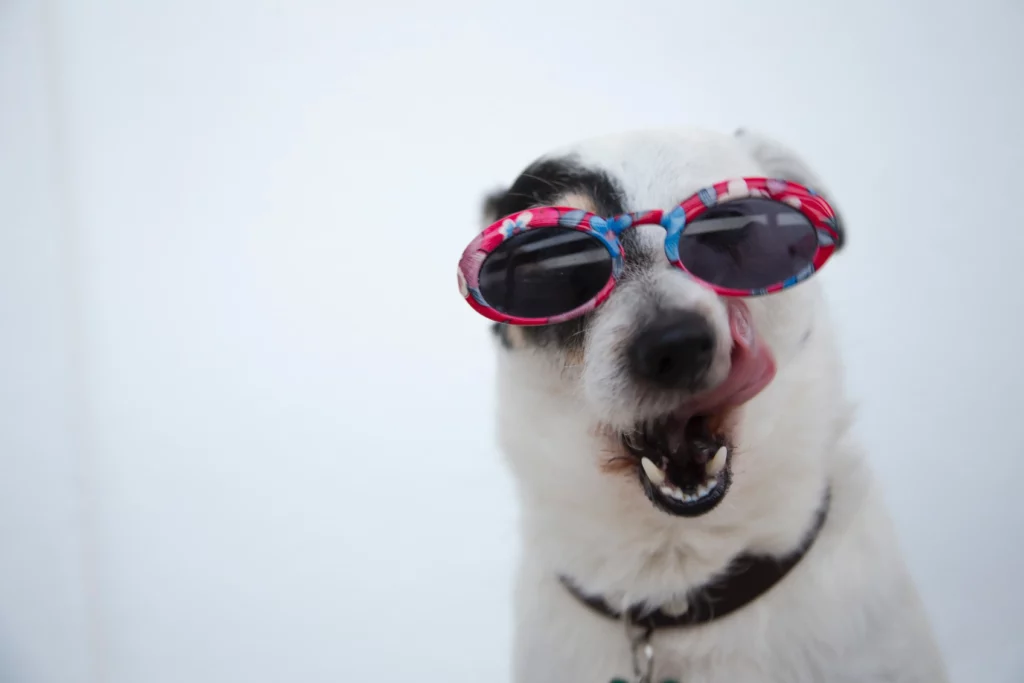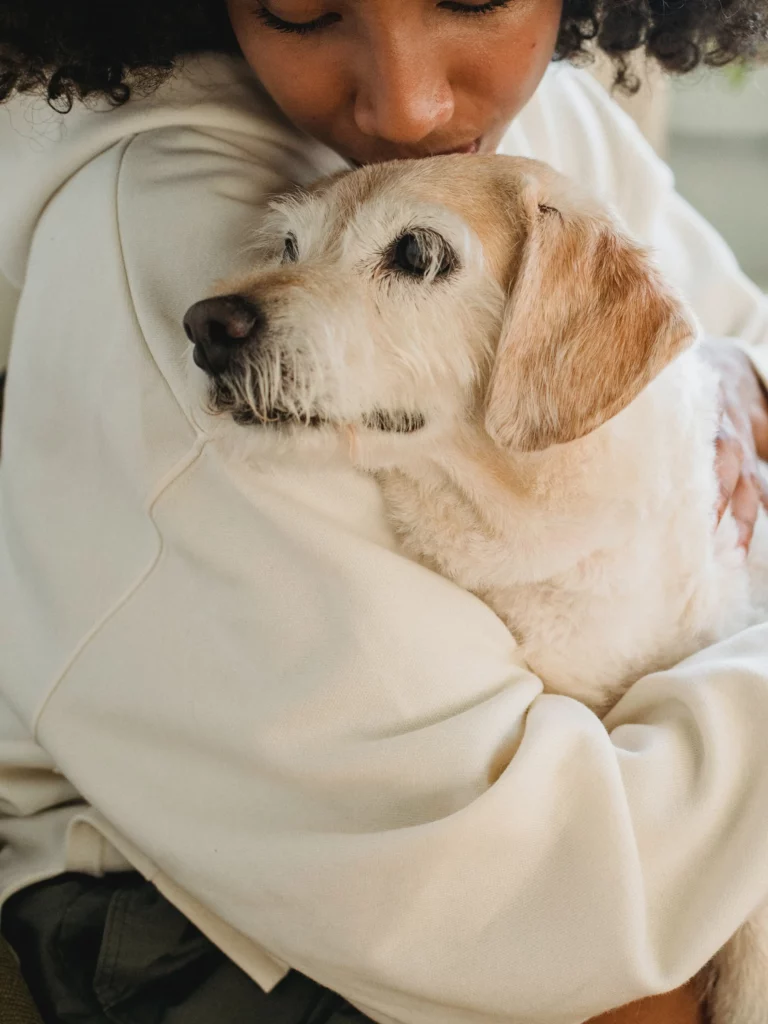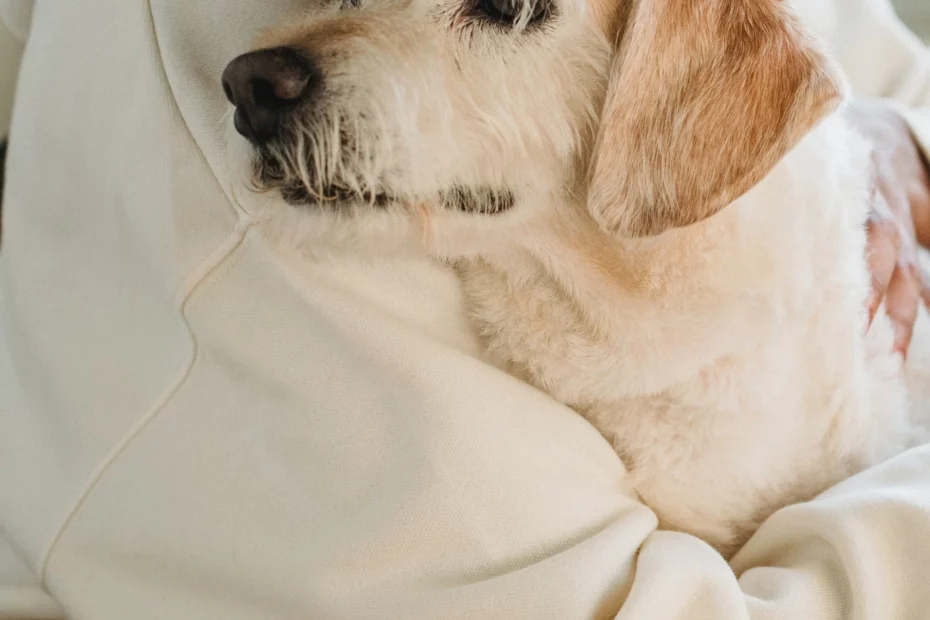Why do dogs like cuddling? Dogs like to cuddle because it is a way to show affection and love, bond and trust, and get warm and cozy. Cuddling is part of their pack mentality, and they consider you as part of their close-knit group. Cuddling also helps them generate a memory of you by smelling you.
Dogs cuddle to get warmth, bond with their family members or pack, and because it releases chemicals and hormones that make them feel good. When dogs cuddle with us, their brains release the feel-good hormone oxytocin, which reinforces their desire and enjoyment of touch and bonding.

The Science of Bonding : Why do dogs like cuddling
Research suggests that cuddling triggers the release of oxytocin, a hormone associated with social bonding and feelings of trust and love. When dogs and humans engage in physical contact, oxytocin levels increase in both species, creating a positive feedback loop of affection and emotional connection. This hormonal response reinforces the bond between dogs and their human companions.
- Instinctual Behavior: Dogs have descended from wolves, which are highly social pack animals. In the wild, wolves huddle together for warmth, protection, and a sense of security. This instinctual behavior has been retained in domesticated dogs, making them seek physical closeness to their human “pack” for comfort and safety. Cuddling provides them with the warmth and security they crave.
- Social Animals: Dogs are inherently social creatures that thrive on companionship and social interaction. Cuddling is a way for them to fulfill their social needs by seeking physical contact and closeness with their human caregivers. It strengthens the bond and promotes a sense of belonging within their social group, contributing to their overall well-being.
- Emotional Regulation: Cuddling has a calming effect on dogs, similar to how it can help humans relax and reduce stress. Physical touch releases endorphins, which are natural mood-boosting chemicals. When dogs cuddle, their heart rate and blood pressure can decrease, promoting a state of relaxation and emotional balance. It can be particularly beneficial for dogs experiencing anxiety or fear, offering them a source of comfort and emotional support.
- Reciprocal Affection: Dogs are incredibly perceptive to human emotions and seek to provide us with comfort and support. Cuddling allows them to reciprocate the affection and love they receive from their human companions. It becomes a mutual expression of trust, love, and care, fostering a deep emotional connection between dogs and their owners.
- Body Language Communication: Cuddling provides an opportunity for dogs to communicate non-verbally with their human counterparts. Through physical contact, dogs can convey their emotions, needs, and desires. They may use subtle cues like nuzzling, licking, or leaning against their owners to express their affection, trust, or a desire for attention. Cuddling strengthens the understanding and bond between dogs and humans by enhancing this non-verbal communication.

How to Make Cuddling a Positive Experience:
Cuddling can be a wonderful way to strengthen the bond with your dog and create lasting memories. To ensure that cuddling remains a positive experience for both you and your furry friend, here are some essential tips:
Understanding your dog’s preferences and boundaries:
- Respect individual preferences: Every dog is unique, and not all dogs enjoy cuddling to the same extent. Observe your dog’s body language and cues to understand their comfort level with physical contact. Some dogs may prefer shorter cuddle sessions, while others may enjoy longer snuggle sessions. Tailor your approach to meet your dog’s preferences.
- Pay attention to signs of discomfort: Watch for signs of stress or discomfort during cuddling. These may include stiff body posture, lip licking, yawning, attempts to move away, or growling. If your dog displays any of these signals, it’s essential to respect their boundaries and give them space.
- Establish consent: Teach your dog the “off” or “break” command, which lets them know they can take a break from cuddling if they desire. This allows them to have control over their level of physical contact, promoting a positive and comfortable experience.
Creating a comfortable and inviting cuddling environment:
- Choose a cozy spot: Designate a comfortable area where you and your dog can cuddle. It could be a soft blanket, a cushioned bed, or a favorite couch. Make sure the environment is free from distractions and provides a sense of security.
- Set the right temperature: Dogs enjoy cuddling for warmth, so ensure the cuddling area is at a comfortable temperature. Use blankets or adjust the room temperature accordingly to provide optimal warmth and coziness.
- Use soothing background sounds: Soft music or white noise can help create a relaxing atmosphere during cuddle time. Calming sounds can enhance the experience and contribute to your dog’s relaxation.
Building trust and strengthening the bond through positive interactions:
- Positive reinforcement: Reward your dog with treats, praise, and gentle strokes during cuddling sessions. This positive association will reinforce their positive behavior and help build trust and a deeper bond.
- Start gradually: If your dog is not accustomed to cuddling, introduce it gradually. Begin with brief sessions and gradually increase the duration as your dog becomes more comfortable. Patience and consistency are key.
- Incorporate grooming: Many dogs find grooming a pleasurable experience, so incorporate gentle brushing or massaging into your cuddling routine. This not only strengthens the bond but also promotes relaxation and physical well-being.
- Engage in interactive play: Prioritize regular playtime to fulfill your dog’s need for physical activity and mental stimulation. Engaging in interactive play sessions before cuddling can help release excess energy, making them more receptive to a calm and cozy snuggle.
Conclusion – Why do dogs like cuddling
Cuddling holds a special place in the hearts of dogs and humans alike. It serves as a powerful tool for bonding, emotional regulation, and communication. Dogs’ instinctual behavior, coupled with their social nature and the release of oxytocin, explains their affinity for cuddling. So, the next time you snuggle up with your furry friend, relish in the scientific wonders behind this act of unconditional comfort, and cherish the profound connection you share with your beloved canine companion.
